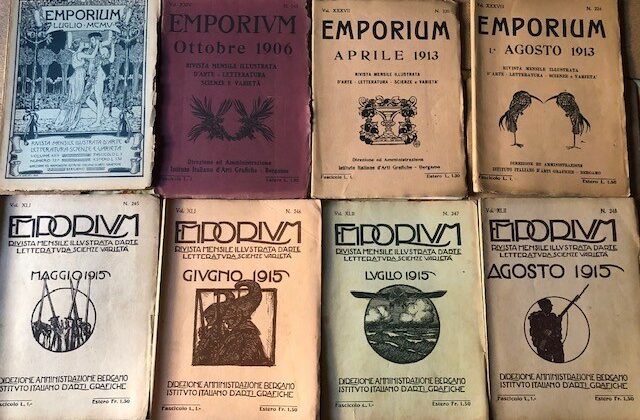Genetic Engineering, Science Fiction and Environmental Toxicology in a Manga: ‘Coppelion’
by Michelle Muscat
MANGAWriter: Tomonori InouePublisher: KodanshaMagazine: Monthly Young MagazineRun: 2008 – 2016
ANIME TV SERIESDirector: Shingo SuzukiWriter: Makoto NakamuraRun: October – December 2013 |
 |
Various radioactivity alertness programmes and strategies have been developed. These encompass both the medical countermeasures subsequent to radiation exposure as well as longer term plans for bioremediation. ‘Coppelion’ provides a compelling glimpse at the wasteland left after a nuclear disaster and a peculiar new concept, namely that of the radiation-immune genetically engineered human.
Before delving into the fictional universe of ‘Coppelion’, it is worthy to note some relevant real life instances. In the wake of past nuclear disasters which led to large-scale release of radioactivity such as the notorious Chernobyl disaster back in 1986, and more recently, the Fukushima Daiichi nuclear disaster in 2011, Belgium had announced precautionary measures as part of a nuclear emergency plan, which included providing the whole population with iodine tablets. Medical countermeasures to radioactive exposure include use of potassium iodide, prussian blue, DTPA (diethylenetriamine pentaacetate) and filgrastim1-7.
In the science fiction world of ‘Coppelion’ we are initially presented with three genetically engineered girls forming the medical unit Coppelion, after a large scale nuclear meltdown. Concepts of environmental toxicology are central to the plot progression and in various instances the viewer is presented with issues of waste disposal, such as waste being dumped in the wasteland of the nuclear incident; and at one point one of the girls is treated with hyperbaric oxygen. ‘Coppelion’ anime television series was based on a seinen manga by the same name, written by Tomonori Inoue and published by Kodansha from 2008-2016. The story of ‘Coppelion’ plays heavily on the elements of science fiction, namely rendering the teenage girl protagonists immune to the nuclear radiation and hence able to roam freely amongst the ruins without requiring personal protective gear.
In a classical comic ballet which premiered in 1870 and bearing a similar name, namely ‘Coppélia’, Dr Coppélius creates a life-sized doll. The life-sized doll or ‘puppet’ parallels are felt in the Coppelion story, which in turn give rise to ethically-charged questions with respect to the subjecting of these girls to genetic modification. The lead girl, Ibara Naruse, however, still retains hope and a positive outlook, in the inhospitable surroundings and challenging situations.
In practice, many biotechnology techniques have been put forth in an attempt to help decontaminate soil, such as for example, the use of immobilized photosynthetic bacteria coupled with anaerobic digestion and fermentation of lactic acid8. Scavenging-precipitation ion exchange methods9 form part of the growing initiative in ecotoxicology for bioremediation10. There are both severe acute and long term consequences to health arising from the dispersion of radioactive material11, 12, hence viewing ‘Coppelion’ is both entertaining and topical.
This review is partially funded through the Endeavour Scholarship Scheme
References
- Breeman WA, De Jong MT, De Blois E, Bernard BF, De Jong M, Krenning EP. Reduction of skeletal accumulation of radioactivity by co-injection of DTPA in [90Y-DOTA0,Tyr3]octreotide solutions containing free 90Y3+. Nuclear medicine and biology. 2004;31(6):821-4.
- Kitajima A, Ogawa H, Kobayashi T et al. Monitoring low-radioactivity caesium in Fukushima waters. Environmental science Processes & impacts. 2014;16(1):28-32.
- Kunii Y, Uruno T, Mukasa K et al. Inhibitory effect of low-dose inorganic iodine on thyroidal radioactive iodine uptake in healthy Japanese adults. Endocr J. 2016;63(1):21-7.
- Verger P, Aurengo A, Geoffroy B, Le Guen B. Iodine kinetics and effectiveness of stable iodine prophylaxis after intake of radioactive iodine: a review. Thyroid : official journal of the American Thyroid Association. 2001;11(4):353-60.
- Zanzonico PB, Becker DV. Effects of time of administration and dietary iodine levels on potassium iodide (KI) blockade of thyroid irradiation by 131I from radioactive fallout. Health physics. 2000;78(6):660-7.
- MacVittie TJ, Bennett AW, Farese AM et al. The Effect of Radiation Dose and Variation in Neupogen(R) Initiation Schedule on the Mitigation of Myelosuppression during the Concomitant GI-ARS and H-ARS in a Nonhuman Primate Model of High-dose Exposure with Marrow Sparing. Health physics. 2015;109(5):427-39.
- Did you know? Prussian blue dye. Consumer reports. 2004;69(1):45.
- Sasaki K, Morikawa H, Kishibe T et al. Practical removal of radioactivity from soil in Fukushima using immobilized photosynthetic bacteria combined with anaerobic digestion and lactic acid fermentation as pre-treatment. Biosci Biotechnol Biochem. 2012;76(9):1809-14.
- Brooksbank RE, Browder FN, Holcomb RR, Whitson WR. Low-Radioactivity-Level Waste Treatment. Ii. Pilot Plant Demonstration of the Removal of Activity from Low-Level Process Wastes by a Scavenging-Precipitation Ion-Exchange Process. Ornl-3349. ORINS [reports] US Atomic Energy Commission. 1963;86:1-63.
- Luo X, Zeng XC, He Z et al. Isolation and characterization of a radiation-resistant bacterium from Taklamakan Desert showing potent ability to accumulate Lead (II) and considerable potential for bioremediation of radioactive wastes. Ecotoxicology. 2014;23(10):1915-21.
- Thiessen KM, Andersson KG, Batandjieva B et al. Modelling the long-term consequences of a hypothetical dispersal of radioactivity in an urban area including remediation alternatives. Journal of environmental radioactivity. 2009;100(6):445-55.
- Jonsson L, Plamboeck AH, Johansson E, Waldenvik M. Various consequences regarding hypothetical dispersion of airborne radioactivity in a city center. Journal of environmental radioactivity. 2013;116:99-113.


